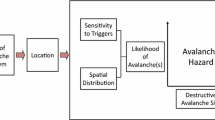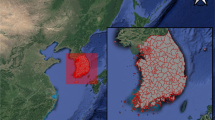Abstract
Decision-makers (DMs) usually encounter the problem of preference transfer when making decisions about emergencies in a complex environment. We propose a new method for dynamic emergency decision-making for large-group risk based on cumulative prospect theory (CPT). First, the preference judgment matrix is used to aggregate the DMs’ preferences in different event states. Second, because of the complexity of the number of decisions proposed by a large group, a clustering method is used to cluster the preferences of the decision-making group and obtain a number of different aggregations with corresponding weights. Then, given that the risk preferences of the DMs affect the decision result, CPT is used to calculate the overall outlook value for large-group decision-making. Finally, DMs need to adjust the preference judgment matrix according to changes in event states. After several stages of adjustment, the Markov chain for the current development state and the DMs’ preference transfer matrix are obtained. The optimal scheme for the current state is given as a combination of the preference transfer matrix and the overall outlook value for the large group. Using this method, DMs can obtain the best scheme for different states in advance and make an emergency plan to reduce the risk of preference transfer. A case study is used to illustrate the rationality and effectiveness of the proposed method.

Similar content being viewed by others
References
Aczel J, Saaty TL (1983) Procedures for synthesizing ratio judgements. J Math Psychol 27(1):93–102
Bell DE (1982) Regret in decision making under uncertainty. Oper Res 30(5):961–981
Bell DE (1985) Disappointment in decision making under uncertainty. Oper Res 33(1):1–27
Bocquého G, Jacquet F, Reynaud A (2014) Expected utility or prospect theory maximisers? assessing farmers’ risk behaviour from field-experiment data. Eur Rev Agric Econ 41(1):135–172
Chen J, Zhong PA, Xu B et al (2015) Risk analysis for real-time flood control operation of a reservoir. J Water Resour Plan Manag 141(8):1–10
Fan ZP, Li YH, Zhang Y (2015) Generating project risk response strategies based on CBR: a case study. Expert Syst Appl 42(6):2870–2883
Gao H, Barbier G, Goolsby R et al (2011) Harnessing the crowdsourcing power of social media for disaster relief. IEEE Intell Syst 26(3):10–14
Gao J, Li M, Liu H (2015) Generalized ordered weighted utility averaging-hyperbolic absolute risk aversion operators and their applications to group decision making. Eur J Oper Res 243(1):258–270
Han B, Zank H (2009) Additive utility in prospect theory. Manag Sci 55(5):863–873
Harsanyi JC (1955) Cardinal welfare, individualistic ethics, and interpersonal comparisons of utility. J Polit Econ 63(4):309–321
Hu J, Yang L (2011) Dynamic stochastic multi-criteria decision making method based on cumulative prospect theory and set pair analysis. Sys Eng Procedia 1(1):432–439
Jiang P (2011) Emergency management of emergencies. National School of Administration Press, Beijing
Jou RC, Chen KH (2013) An application of cumulative prospect theory to freeway drivers route choice behaviours. Transp Res Part A Policy Pract 49:123–131
Kahneman D, Tversky AN (1979) Prospect theory: an analysis of decision under risk. Econometrica 47(2):263–291
Kahneman D, Tversky A (1992) Advances in prospect theory: cumulative representation of uncertainty. J Risk Uncertain 5(4):297–323
Krohling RA, Souza TTM (2011) Two examples of application of TOPSIS to decision making problems. Salesian J Inf Syst 8:31–35
Liu Y, Fan ZP, Zhang Y (2014) Risk decision analysis in emergency response: a method based on cumulative prospect theory. Comput Oper Res 42(2):75–82
Loomes G, Sugden R (1982) Regret theory: an alternative theory of rational choice under uncertainty. Econ J 92:805–824
Loomes G, Sugden R (1986) Disappointment and dynamic consistency in choice under uncertainty. Rev Econ Stud 53(2):271–282
Saaty TL (1980) Multicriteria decision making: the analytic hierarchy process. McGraw-Hill, New York
Schmidt U, Zank H (2002) Risk aversion in cumulative prospect theory. Gen Inf 54(1):208–216
Shen H, Zhao J, Huang WW (2008) Mission-critical group decision-making: solving the problem of decision preference change in group decision-making using Markov chain model. J Glob Inf Manag 16(2):35–57
Shi Y, Cui X, Li D (2015) Discrete-time behavioral portfolio selection under cumulative prospect theory. J Econ Dyn Control 61:283–302
Tanino T (1984) Fuzzy preference orderings in group decision making. Fuzzy Sets Syst 12:117–131
Wang L, Zhang ZX, Wang YM (2015) A prospect theory-based interval dynamic reference point method for emergency decision making. Expert Syst Appl 42(23):9379–9388
Xu Z, Da Q (2001) The ranking method of complementary judgement matrix based on reciprocal judgment matrix of three kinds. J Southeast Univ 1(6):97–99
Xu X, Zhang L, Chen X (2012) Cluster grouping method based on attribute binary relation under fuzzy preference. Syst Eng Electron 34(11):2312–2317
Yager RR, Rybalov A (1996) Uninorm aggregation operators. Fuzzy Sets Syst 80(1):111–120
Zook M, Graham M, Shelton T et al (2010) Volunteered geographic information and crowdsourcing disaster relief: a case study of the Haitian earthquake. World Medical Health Policy 2(2):7–33
Acknowledgements
The authors would like to thank the editors and anonymous reviewers for their insightful comments and suggestions. This study was funded by the National Natural Science Foundation in China (Nos. 71671189, 71790615, 71431006), Innovation-driven Program of Central South University (2015CX010), Mobile E-business Collaborative Innovation Center of in Hunan Province and Key Laboratory of Hunan Province for mobile business intelligence, Key program for Financial Research Institute Foundation of Wenzhou University.
Author information
Authors and Affiliations
Corresponding author
Ethics declarations
Conflict of interest
We declare that we have no financial and personal relationships with other people or organizations that can inappropriately influence our work, there is no professional or other personal interest of any nature or kind in any product, service and/or company that could be construed as influencing the position presented in, or the review of, the manuscript entitled.
Ethical approval
This article does not contain any studies with animals performed by any of the authors.
Additional information
Communicated by A. Genovese, G. Bruno.
Rights and permissions
About this article
Cite this article
Xu, X., Pan, B. & Yang, Y. Large-group risk dynamic emergency decision method based on the dual influence of preference transfer and risk preference. Soft Comput 22, 7479–7490 (2018). https://doi.org/10.1007/s00500-018-3387-3
Published:
Issue Date:
DOI: https://doi.org/10.1007/s00500-018-3387-3




